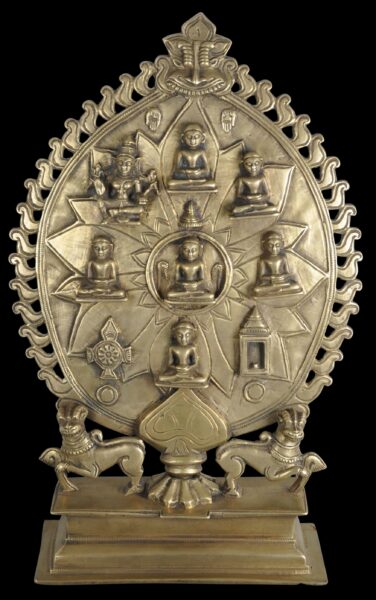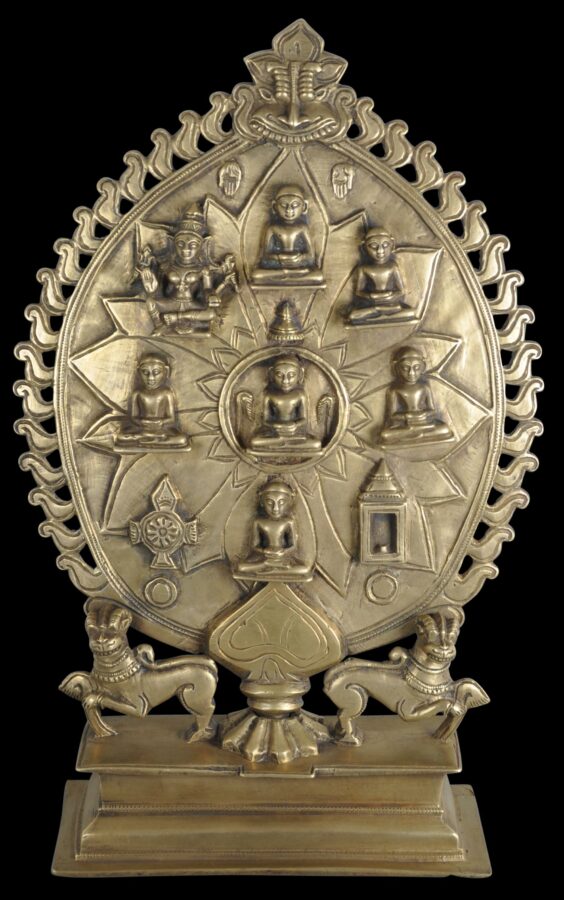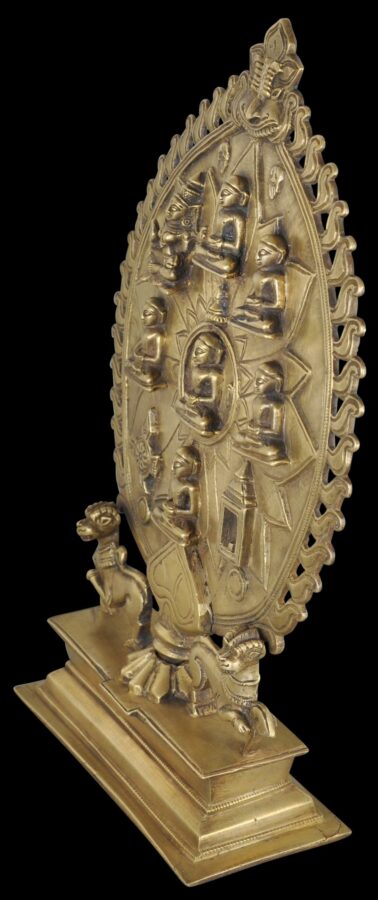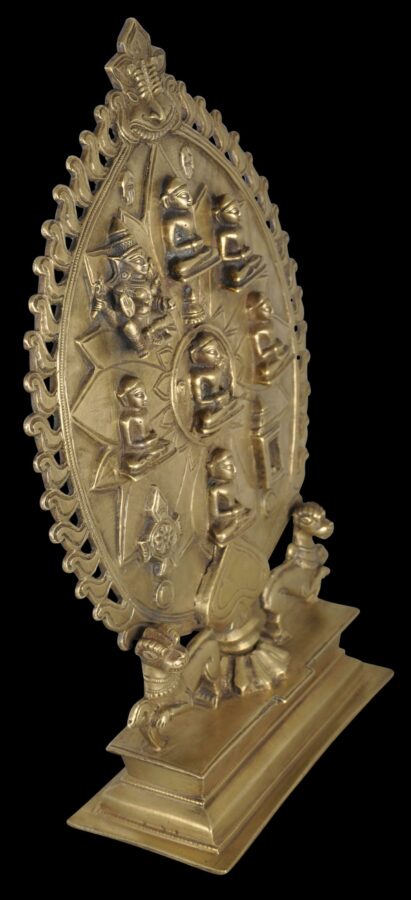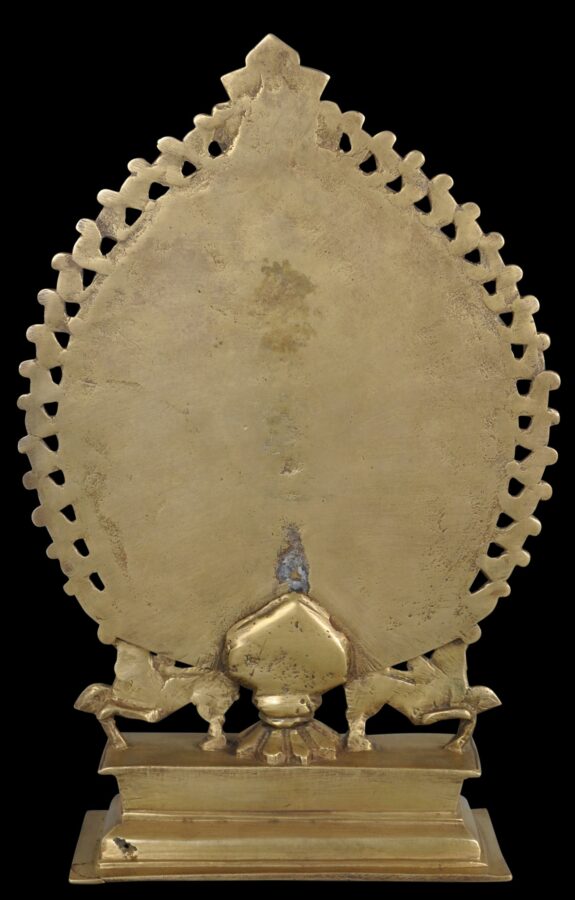Enquiry about object: 9431
Rare Jain Digambara Brass Mandala Shrine of the Navadevata
Karnataka, India circa 15th century
height: 28.8cm, width: 18.7cm, depth: 6.8cm, weight: 1,752g
Provenance
UK art market
This rare mandala shrine of cast and chiselled brass, from the Digambara tradition of Jainism, is known as a Navadevata (Nine Divinities). It is of petal form and has a pierced, flaming surround. It stands on a rectangular, tiered base supported by a pair of addorsed yalis, between which these is a large, single and engraved peepel leaf. The shrine has at its top a protective kurtimukha face in the form of a yali mask.
It contains the essence of the Jain teachings in the form of an open, eight-petalled lotus shown frontally. The icons of the five supreme Jain lords are shown naked in the centre, and the four cardinal directions. The liberated arhat or enlightened Jina is represented in the middle. The siddha, representing all other enlightened souls, is at the top. The archarya, the monastic leader, is on the right. The upadhyaya, or monastic teacher or preceptor, is on the left. And the sadhu, who represents all other monks and nuns, is on the left. All five represent the complete pantheon of Jain world renouncers. Other Jinas are shown, plus an empty shrine is shown in the bottom right hand corner, and a dharmacakra or wheel of teaching, is shown in the bottom left. Additionally, a pair of open palms are shown at the top.
Mandala shrines such as this example expand the Jain vision of the spiritual ideal beyond the Jinas to envelop the Jain worldview of fundamental reality.
Pal (2016, p. 103) illustrates a similar example also attributed to the 15th century.
The Digambara sect believes that since the Jinas (enlightened teachers) renounced all clothing and were naked, that true monks should also go naked (dig-ambara literally means ‘sky-clad’.) However, the other main Jain sect, the Shvetambaras, which is numerically larger, disagrees.
The example here is in very good condition and is without losses or repairs. The brass is bright and this is typical of other similar shrines even with 15th century attributions. It is sculptural, dramatic and rare.
References
Kannan, R., & T.K. Lakshminarayanan, Iconography of the Jain Images in the Government Museum – Chennai (Madras), The Commissioner of Museums, Government Museum, Chennai, 2001.
Pal, P. (ed.), Puja and Piety: Hindu, Jain, and Buddhist Art from the Indian Subcontinent, Santa Barbara Museum of Art/University of California Press, 2016.


